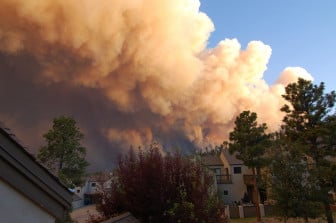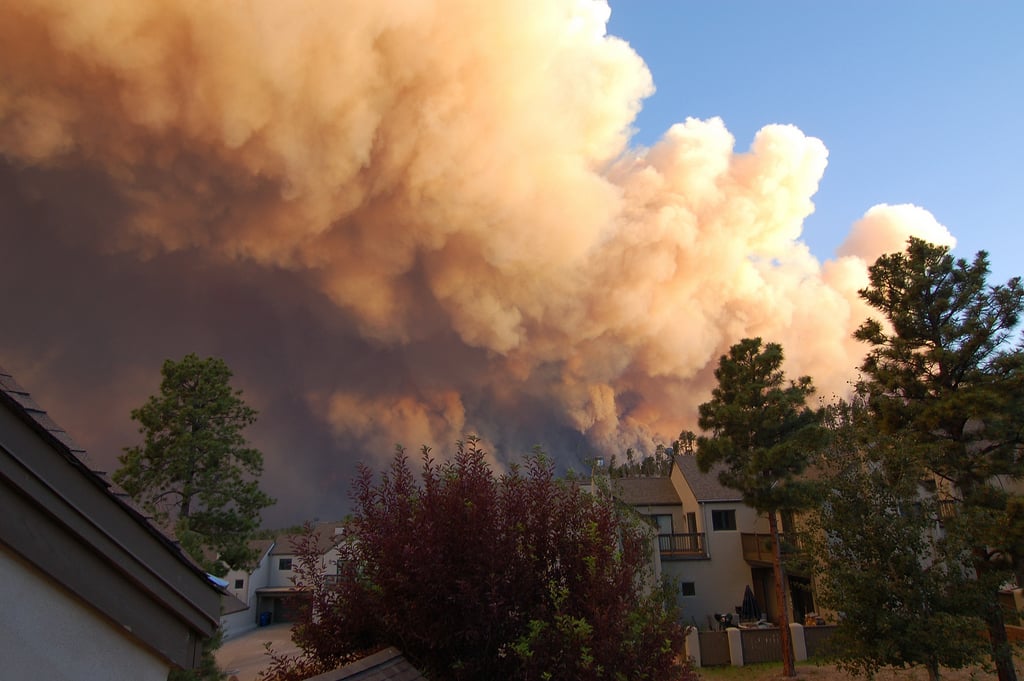
Image by Larry Lamsa/flickr
Photo taken from home as the Los Conchas Fire threatened Los Alamos
Last year, the nonprofit Forest Stewards Guild released a report on how communities in the Wildland-Urban Interface can best protect homes and neighborhoods from wildfires.
The WUI—or “woo-eee”—refers to areas where homes and businesses meet or abut forests and undeveloped wildlands.
Nationally, more than ten percent of the U.S. population lives within these zones—and developments are increasing all the time, despite the risks from wildfires.
The cost of fighting wildfires is rising, too. That’s in part because more people live along the fringes of the forests—forcing firefighters to defend properties and communities when those bigger, more frequent fires occur due to warming. In the 1990s, wildfire suppression comprised about 13 percent of the agency’s budget. In 2014, it was more than half.
With so many homes within the WUI, conducting prescribed burns can be trickier than in more remote forests, like the Gila. Oftentimes, for example, people oppose projects, saying the smoke is a nuisance.
Individual communities and families can buffer their homes from wildfire, says Alexander Evans, executive director of The Forest Stewards Guild. And agencies can undertake landscape-level projects, too—similar to the Southwest Jemez Mountains Collaborative Landscape Restoration.
“Not to be doom and gloom, but things will burn,” he says, “and if we’re not making the investment as taxpayers, we’re going to pay the price as taxpayers in terms of rebuilding infrastructure.”
For Evans and others, water is an issue, too: “If you destroy your watershed, you’re going to be spending money to get water some other way,” he says. “I’d rather pay, as a taxpayer, in advance and in a positive way that has these other eco-benefits, rather than trying to recover after the fire.”
